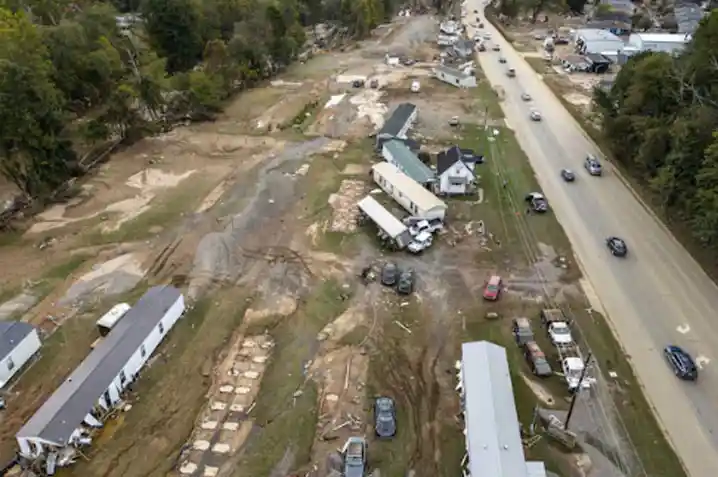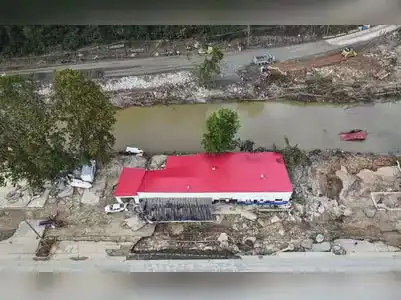In one of the worst storms in American history, Hurricane Helene left behind widespread destruction in the South on Monday, exposing a wasteland of mud-covered highways, splintered homes, and crushed shipping containers. There were more than 130 fatalities. Read this article to learn more about Helene’s death.
Information on Helene’s death
In western North Carolina, a crisis was developing as those who were trapped due to washed-out roads, a lack of electricity, and cellular service waited in line for fresh water and the opportunity to let loved ones know they were still alive days after the storm.
The storm that caused damage from Florida’s Gulf Coast to the Appalachian Mountains in six Southeastern states has been blamed for at least 133 fatalities.
As emergency personnel arrived in places cut off by destroyed roads, deteriorating infrastructure, and extensive water, the death toll gradually increased. White House homeland security adviser Liz Sherwood-Randall said during a briefing on Monday that up to 600 people were still missing as of Monday afternoon, with some perhaps dead.
Earlier, he stated that the federal government will support impacted citizens in the southeast region of the country “for as long as it takes.”
To get supplies to the severely damaged tourist destination of Asheville and the nearby mountain villages, government representatives and relief organizations labored by plane, truck, and even mule. In the county that contains Asheville, at least 40 individuals lost their lives.
There was so much despair and ruin. On top of a bridge that over a murky brown river was a flattened shipping container. Lake Lure, a charming location nestled between the mountains outside of Asheville, was buried in a mound of debris, including overturned pontoon boats, shattered wooden piers, and tree stumps.
As a group of people congregated on a hillside where they could access cellular service, a mom held her infant and many of them texted, “I’m OK.”
Numerous horrifying accounts of persons murdered by fallen trees or trapped in their houses and cars by flooding were included in the North Carolina Helene’s death toll. After being buried inside his truck, a courtroom security guard passed away.
How some of the most affected regions are handling?
The city’s water supply was badly damaged, leaving inhabitants to collect stream water in buckets to flush toilets, and mudslides blocked or washed away several major routes into Asheville, including a 4-mile (6.4-kilometer) stretch of Interstate 40.
In one community, a wall of water tore away all the trees, leaving a muddy disaster in its wake, but people comforted each other and shared food and water. Outside her house, which has been without electricity since Friday, Sommerville Johnston remarked, “That’s the blessing so far in this.”
Officials from the Federal Emergency Management Agency reported on Monday that over 1,000 individuals were being housed in shelters.
Why was western North Carolina so severely affected?
Because the leftovers of Helene reached the Appalachian Mountains’ higher elevations and cooler air there, which resulted in substantially more rain, Western North Carolina saw comparatively more destruction.
Because Asheville and many of the nearby mountain communities were constructed in valleys, they are particularly susceptible to destructive flooding and rain. Additionally, Christiaan Patterson, a National Weather Service meteorologist, stated that the ground was already saturated before to Helene’s arrival.
Also Read – Famous Reality Show Sarah Danser Laments the Honolulu Disaster

David Kees is a seasoned journalist with a passion for uncovering the stories that matter most. With over a decade of experience in news reporting and investigative journalism, David is dedicated to delivering clear, accurate, and engaging content that informs and inspires. Known for his insightful analysis and commitment to factual storytelling, he has covered everything from breaking news to in-depth features on global events. When he’s not chasing the next big story, David enjoys exploring new cultures, reading historical fiction, and discussing the latest developments in media ethics.












